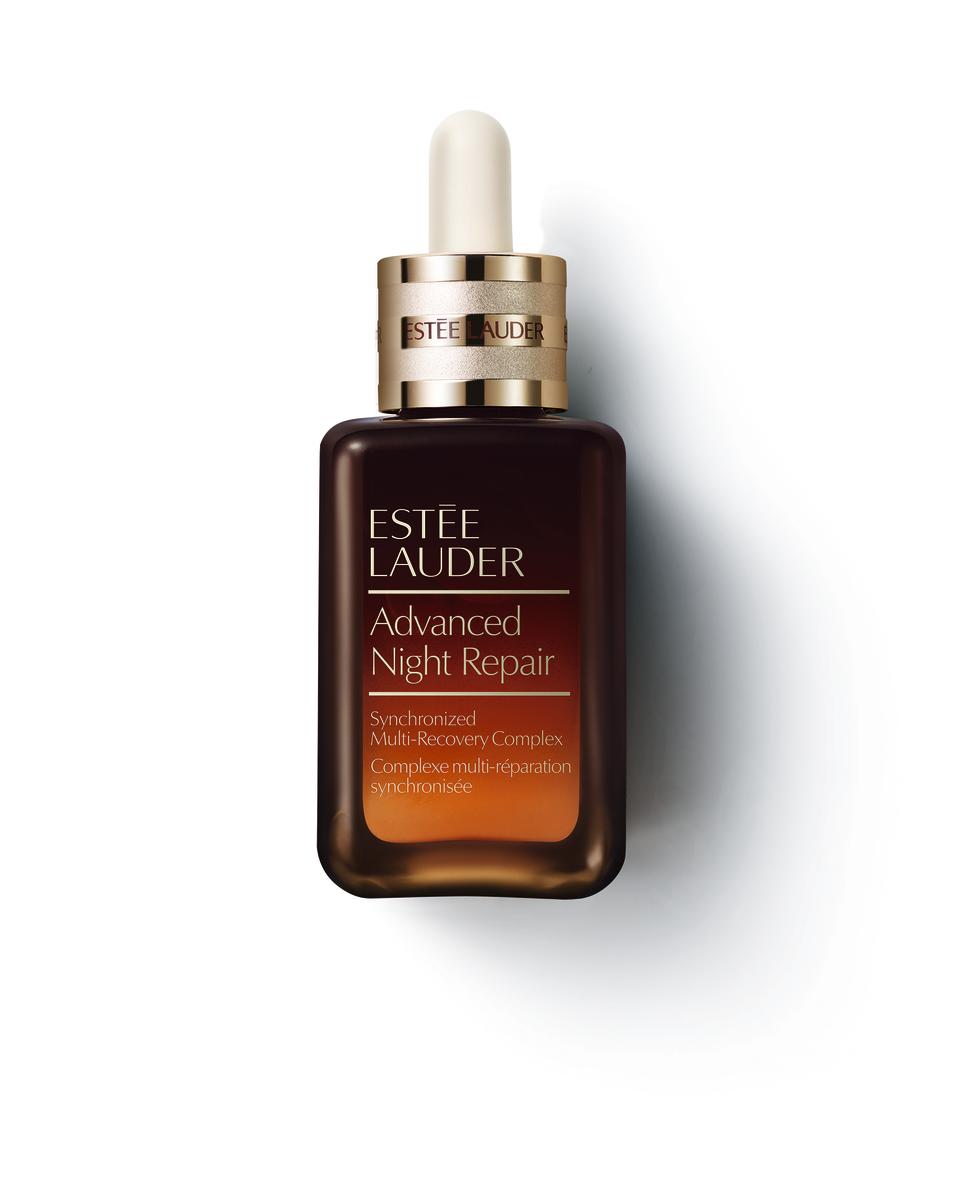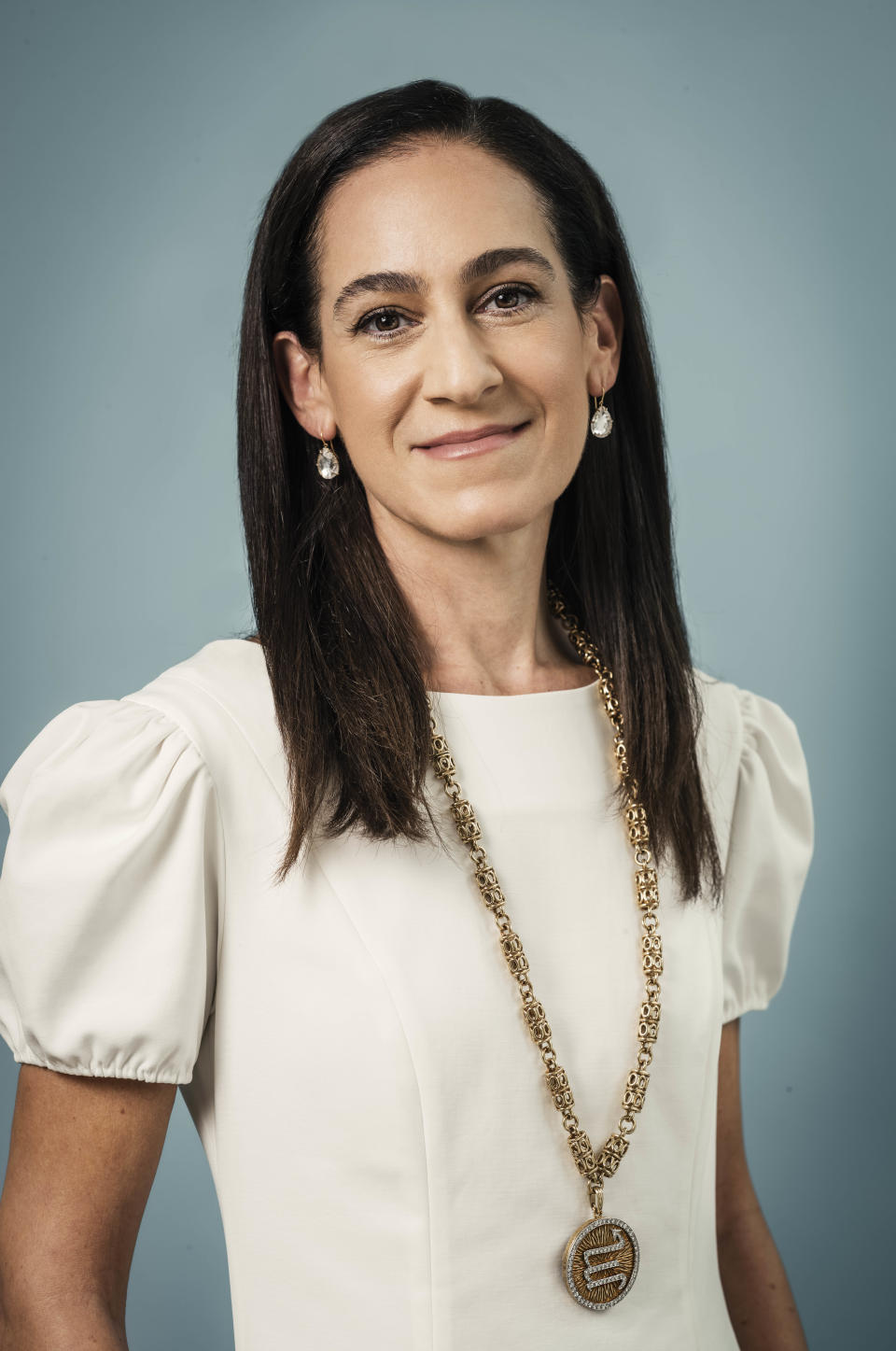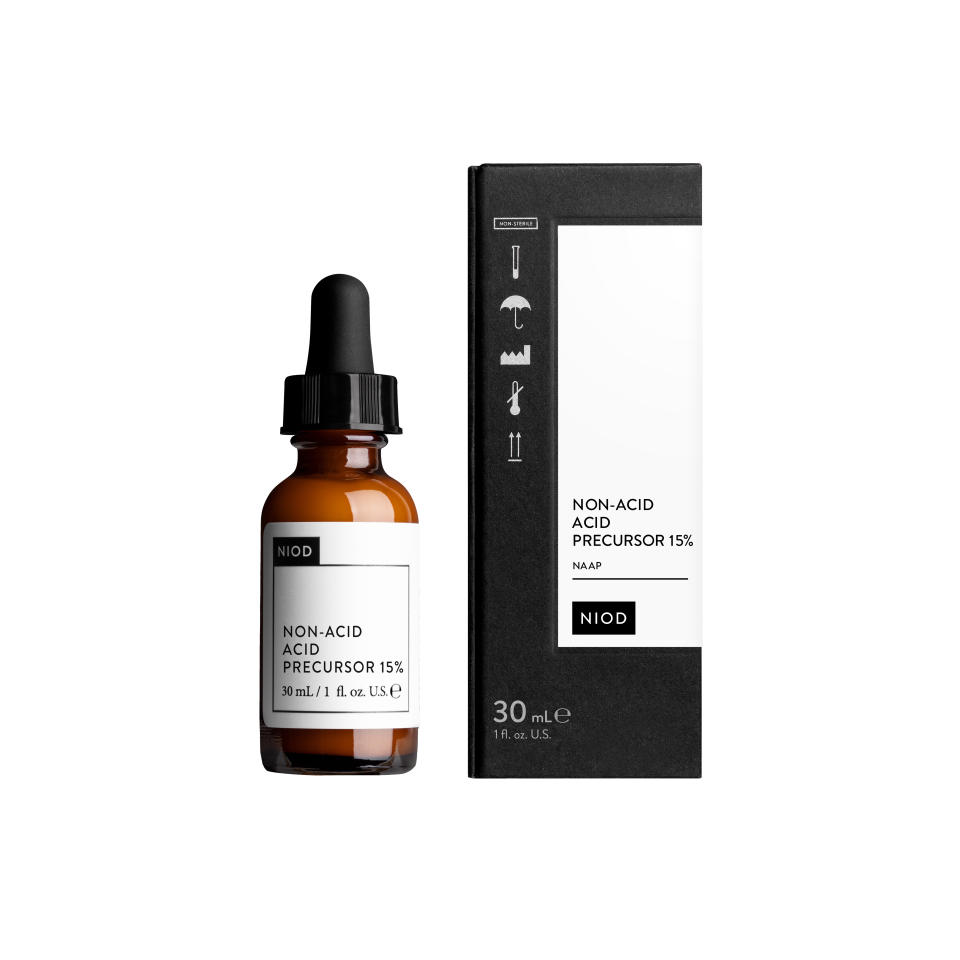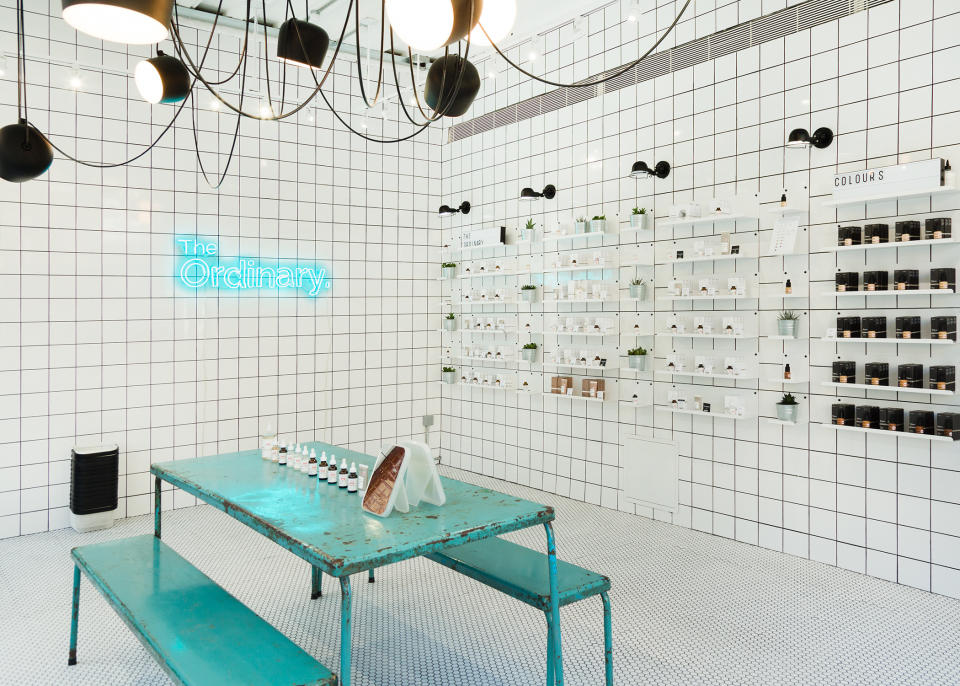Powering Relevance Through Innovation
- Oops!Something went wrong.Please try again later.

Executives at the Estée Lauder Cos. are quick to point out the company’s roots in “high-touch” services. They are well-versed in the history of the company, in how its eponymous founder would park herself at beauty counters to talk to customers, or do market research for packaging aesthetics in women’s bathrooms.
Seventy-five years later, they are tasked with taking what historically would have been one-on-one interactions, and translating them to the masses — all while keeping the products and experiences feeling special.
More from WWD
These days, Jane Lauder, Estée’s granddaughter and executive vice president of enterprise marketing and chief data officer, finds herself mining for “aspirational intelligence,” she said. Think: Estée peering into bathrooms to feel out the vibe and then translating it into vanity-worthy packaging, but for 2021.
“Whether it’s going into women’s bathrooms, that’s one data point, but there’s so many other areas to understand what consumers are doing. How do we learn more about them?” Lauder said. One answer is by combining online and offline first-party customer data into a single-consumer data platform.
“We now have this ability to really be able to look at all of our consumers and gain insight into their shopping behaviors, what they purchased and what they’re using, and to combine all of that with third-party sources to be able to really build out a picture of these consumers,” Lauder said.
“Aspirational intelligence” comes from connecting all of those dots to determine insights, Lauder added.
Those insights help the company not only develop new products, but think about how to market existing products in new contexts.
Lauder shared an example out of the U.K., where the team drew upon “mind-set moments” to promote Advanced Night Repair. In November, when people were in lockdown and Google searches for relaxation started spiking, the team saw an opportunity to talk about Zoom fatigue, and came up with ways to talk about “ANR as a way to prevent blue light fatigue,” Lauder said. “When we created those relevant messages we saw two times more sales than the control group. It’s about listening and creating that relevance, seeing what’s happening, what are people talking about, what are they saying, and then connecting the dots to many of our products and experiences that we’re trying to deliver.”

Kanji Ishi
During the coronavirus pandemic, the company had to pivot away from in-store services toward digital offerings, like artificial reality and livestreaming. And while those offerings filled a specific hole while retail selling was on hold, executives expect them to continue to play a role in engaging shoppers going forward.
“Part of it is entertainment,” Lauder said.
With livestreaming in particular, the commitment levels seen during the pandemic were low. Shoppers weren’t looking there for one-on-one services, but they were looking to learn more about different products to see what might be right for them, Lauder said. “Then you can dial in to have a live virtual chat online or go into store. This helps create that interest and engagement ahead of time so people feel much more confident.”
It’s not just Gen Z’s whom Lauder is trying to reach online, either. What the company terms the “ageless consumer” has starting shopping online (sometimes for the first time) during the pandemic, and they embraced digital tools wholeheartedly.
“They were the ones who really embraced live chat and video chat online. They were excited. They wanted to get that service and that one-to-one experience. It’s opened up a whole new world for them to be online and have both the convenience and the discovery there,” Lauder said.
Digital tools have been available for a few years to help consumers virtually try on multiple shades of lipstick quickly, but more recently have been adapted to be able to show the results of skin care products over time with the Clinical Reality VTO tool. “We said, ‘OK, how do we show you clinically and really test that to show the results you could see after a week, after a month, after three months.’ That’s where the magic of technology comes in, is to solve the pain points,” Lauder said.
Those visible results are crucial when it comes to product development in skin care, said Janet Pardo, senior vice president of product development worldwide. Pardo said that today’s consumers are not interested in “fluff” or “whimsical” claims.
“People want authenticity, they want formulations that work,” Pardo said. “They want products that make a difference to their skin, that make them feel good about themselves, that make somebody notice that there’s something happening, and in order to do that, a lot of stuff has to happen behind the curtain.”
One of those things is rigorous safety testing. Pardo said that before an ingredient can be included in a Lauder product, the company considers sustainability, purity, efficacy and safety.
“There is a tremendous vetting process,” she said. “To get a raw material coded into our system means it has to go through all that safety testing, all that allergy testing, all that rigor, it could take upwards of two years until we’re allowed to put it in a formula.”
Pardo predicts “tried and true” skin care ingredients like retinol, vitamin C and hyaluronic acid will remain popular, so long as they are at effective levels in formulations, and that products don’t cause skin inflammation.
“If your skin is inflamed it takes all the energy you have in your skin to quell that inflammation. So it can’t repair,” Pardo said. “If you’re having other issues like hyperpigmentation or acne or severe dehydration or redness or any of these concerns, your skin is redirected to quell the skin inflammation, that’s the body’s defense mechanism.”

Mark Mann/WWD
Lauder’s formulas are meant to be balanced with the “gas and brake” of actives with soothing ingredients, Pardo said. They are also made with the skin microbiome in mind, which Pardo said more consumers are starting to pay attention to. Mask-wearing and the accompanying skin irritation has put the skin barrier front and center, and Lauder is testing products to see if they can help keep the skin barrier healthy, Pardo said.
In one recent test, Clinique Moisture Surge went through a clinical test to determine if wearing the moisturizer under a mask would help the skin barrier, Pardo said. It did.
“With what’s happening around us and the ever-evolving environment and the changes that are going on with our climate and the world, I think [the microbiome] will become a very big conversation,” Pardo said.
In makeup, the conversation is moving down to the micro level, according to Sam Cheow, senior vice president and global head of makeup innovation, portfolio and product development.
“We’re really looking at makeup innovation globally, not just the North America point of view and integrating what we see from Asia is very important,” Cheow said. “For makeup, especially for any large organization, we really need to look at it from a portfolio perspective. It’s not just on your foundation and your concealer — what are the other subcategories that we need to focus on?”
That segmentation will go down to the level of breaking down finishes for different products into things like transparent glow, matte glow, velvet glow, dewy glow and lacquer glow, Cheow said.
He contends that the industry is “in the midst of a makeup Renaissance,” and that as the world slowly opens up, people will start to wear makeup again as they head to the offices and out into the world.
“If you look at New York City … the blush, the highlighter, bronzer and satin lips are sashaying on the street with a vengeance,” he said. “Consumers are really focusing on occasion-based makeup.”
Beyond the streets, he looks to social media for inspiration, and even has group channels set up with other executives in the company, including executive group presidents John Demsey and Jane Hudis, he said. On TikTok, he started to see people playing with blush again.
“That’s when we will communicate to the organization, ‘get ready for blush, it’s definitely coming,’” he said. “You start seeing all the launches coming in or people taking the existing launches and reanimating that.”
As people head back into work, they’ll need to replenish old makeup, Cheow noted. Products like Bobbi Brown’s eye pencils did well during the pandemic as consumers hesitated to touch their faces. Now that masks are coming off, lipstick is coming out, too. “People don’t really care about transfer proof now because masks are coming off and it’s almost like the dopamine effect of reapplying lipstick is something you wished for for a long time,” Cheow said. MAC is targeting these e-consumers with its satin lipstick and liquid lip, Cheow added.
Consumers are interested in “moment-to-moment makeup,” Cheow said — meaning they won’t be wearing those satin lips all the time. “We’re seeing a very cyclical and multidimensional process. Some days it will be a makeup-heavy day, some days it will be makeup light, some days it’s only a skin care day. The behavior of consumers are shifting and that explains why the collision and the blurring of categories will continue to evolve,” he said. “It’s now a makeup-ification of skin care. We are now leveraging skin care to propel makeup.”
The Ordinary, the powerhouse, affordably priced brand of Lauder’s latest acquisition Deciem, has also been focusing more on its makeup products in recent months. The business rolled out foundation at Ulta Beauty in 2020, and debuted concealers earlier this year.
This year, business is doubling down on hair care, which until now has been a fairly nascent category at Deciem. HIF [Hair as Fiber] relaunched in July with two vegan conditioner options; and in late 2021, The Ordinary is expected to launch a hair care line that focuses on conditioning and scalp care.
The man behind those innovations is Prudvi Kaka, Deciem’s chief scientific officer. He joined the company in 2014 and leverages his background in biotechnology and industrial microbiology to make products across all of Deciem’s brands.
“Products under Ordinary are very minimalist and very ingredient-focused, as opposed to when we talk about Niod it’s more about about skin care for hypereducated [people],” Kaka said. With a Vitamin C product for The Ordinary, for example, Kaka said he’d focus on the easiest and most effective way to bring the ingredient to the market in a stable, safe and effective way. For Niod, he said he would think, “what are some biochemical pathways that are involved around Vitamin C and how can we elevate the functionality of Vitamin C,” he said.
Many of Kaka’s creations have gone on to become cult classics, driving Deciem’s $460 million in 2020 sales. But he says there are a few less popular formulations that he’s especially proud of, including Niod’s Acid Precursor and The Ordinary Amino Acid + B5.

Some of those popular products, including The Ordinary’s Azelaic Acid 10% Suspension, Alpha Arbutin 2% +HA and Salicylic Acid 2% Masque, have just moved into larger packaging as part of Deciem’s commitment to sustainability.
“One thing we’re trying to push on innovation is that it’s not necessarily just new products all the time,” said Deciem chief executive officer Nicola Kilner, who added that the business is in the process of trying to become B Corp certified. “It’s making sure that innovation is there where it’s needed and that we never get into a place of innovating just for the sake of it. But actually how do we innovate across different areas, whether that’s things for sustainability or if that’s the messaging.”
Deciem, with complicated scientific product names, has always had different product messaging. Recently, the brand released a campaign called “Everything Is Chemicals” that Kilner said is meant to empower consumers to “make educated decisions for themselves.”
Those types of campaigns and the company’s extreme transparency initially rattled the historically buttoned-up beauty industry. “I remember first developing the concept and getting pushback that consumers won’t understand these ingredient names, they won’t understand the percentages,” Kilner said. “What we didn’t anticipate was actually how many consumers would be open for that scientific conversation. That would have been the biggest piece of innovation that we’ve seen — the waves that decision had across different brands and how that has multiplied and just the success from Deciem from that piece of innovation.”
Today, Kilner said that transparency around people is top of mind. “Consumers want to know they’re not just buying your product, they’re buying into a brand they share values with and they believe in,” she said. “The power is with the voice of the people.”

Jerome Clark
Going forward, Kilner expects that transparency to extend between brands and the political system. “Millennials and Gen Z are getting so passionate now around politics and human rights, but it becomes a very difficult area for brands navigating it,” she said. “I don’t think that kind of full transparency is there yet, but that’s where I see it leading.”
Sign up for WWD's Newsletter. For the latest news, follow us on Twitter, Facebook, and Instagram.

